Polvos de cobalto-cromoa menudo denominados polvos de CoCr, son materiales fundamentales en diversos procesos de fabricación avanzados, sobre todo en sectores como el aeroespacial, los implantes médicos y la automoción. Pero, ¿qué hace que estos polvos sean tan especiales? ¿Por qué se utilizan con tanta frecuencia en aplicaciones de alto rendimiento? Adentrémonos en el fascinante mundo de los polvos de cromo-cobalto, explorando sus propiedades, aplicaciones y todo lo demás.
Descripción general de los polvos de cromo-cobalto
Los polvos de cobalto-cromo son aleaciones compuestas principalmente de cobalto (Co) y cromo (Cr), a menudo con pequeñas adiciones de otros elementos como molibdeno, tungsteno o carbono. Estos polvos son venerados por su excepcional resistencia al desgaste, a la corrosión y a las altas temperaturas. Estas propiedades los hacen ideales para entornos en los que los materiales están sometidos a condiciones extremas, como en la boca (implantes dentales), en el motor (álabes de turbina) o incluso en el cuerpo humano (prótesis de cadera).

Composición de los polvos de cromo-cobalto
La composición de los polvos de cobalto-cromo puede variar en función de los requisitos específicos de la aplicación. La composición típica incluye:
| Elemento | Contenido (%) |
|---|---|
| Cobalto (Co) | 50-70% |
| Cromo (Cr) | 20-30% |
| Molibdeno (Mo) | 5-10% |
| Tungsteno (W) | 0-5% |
| Carbono (C) | 0.5-2% |
| Otros (Ni, Fe, etc.) | 0-5% |
Propiedades y características de los polvos de cromo-cobalto
Los polvos de cromo-cobalto presentan una combinación única de propiedades que los hacen indispensables en aplicaciones de alto rendimiento. Algunas de sus características clave son:
- Alta resistencia a temperaturas elevadas: Estos polvos mantienen su resistencia mecánica incluso a altas temperaturas, lo que los hace ideales para su uso en turbinas y motores.
- Excelente resistencia al desgaste y a la corrosión: La presencia de cromo proporciona una excepcional resistencia a la corrosión, mientras que la dureza de la matriz de cobalto garantiza la resistencia al desgaste, perfecta para implantes dentales y ortopédicos.
- Biocompatibilidad: Las aleaciones de CoCr son biocompatibles, lo que significa que el cuerpo humano no las rechaza. Esto es especialmente importante para los implantes médicos.
- Resistencia a la fatiga: Las aleaciones de cromo-cobalto pueden soportar esfuerzos repetidos sin fracturarse, lo que las hace adecuadas para piezas sometidas a cargas cíclicas.
Modelos clave de Polvos de cromo-cobalto
En el mercado existen varios grados y modelos específicos de polvos de cromo-cobalto, cada uno de ellos adaptado a distintas aplicaciones. A continuación se describen diez modelos destacados:
- CoCrMo (ASTM F75)
- Descripción: Se trata de la aleación de cobalto-cromo-molibdeno más utilizada para implantes médicos, en particular para aplicaciones ortopédicas y dentales.
- Propiedades: Alta biocompatibilidad, resistencia a la corrosión y excelente resistencia al desgaste.
- CoCrW (Stellite 21)
- Descripción: Conocida por su excepcional resistencia al desgaste, esta aleación se utiliza en asientos de válvulas, cojinetes y herramientas de corte.
- Propiedades: Gran dureza, excelente resistencia a altas temperaturas y buena resistencia a la corrosión.
- CoCrNiMo (ASTM F562)
- Descripción: Se utiliza principalmente en instrumentos quirúrgicos y componentes de alta resistencia.
- Propiedades: Alta resistencia, buena ductilidad y resistencia a la corrosión.
- CoCrMoC (ASTM F90)
- Descripción: Una variante con adiciones de carbono para mejorar la dureza.
- Propiedades: Mayor resistencia al desgaste, adecuado para aplicaciones de alto esfuerzo.
- CoCrAlY (AMS 5894)
- Descripción: Se utiliza en aplicaciones aeroespaciales, especialmente en álabes de turbinas.
- Propiedades: Alta resistencia a la oxidación a temperaturas elevadas, buenas propiedades mecánicas.
- CoCrFeMnNi (aleación de alta entropía)
- Descripción: Una aleación más reciente utilizada en aplicaciones de investigación avanzadas por sus propiedades únicas.
- Propiedades: Buena ductilidad, resistencia y resistencia a la corrosión.
- CoCrMoTi
- Descripción: La adición de titanio mejora la biocompatibilidad y reduce la densidad.
- Propiedades: Ligero, alta resistencia a la corrosión, adecuado para implantes médicos.
- CoCrSiW
- Descripción: Esta aleación se utiliza en revestimientos resistentes al desgaste para aplicaciones industriales.
- Propiedades: Alta dureza, excelente resistencia al desgaste y buena estabilidad a altas temperaturas.
- CoCrMoNb
- Descripción: La adición de niobio aumenta la solidez y la resistencia a la fatiga.
- Propiedades: Propiedades mecánicas mejoradas, adecuadas para componentes aeroespaciales.
- CoCrZr
- Descripción: La adición de circonio mejora la biocompatibilidad y la resistencia a la corrosión.
- Propiedades: Alta resistencia a la corrosión, adecuado para implantes dentales y ortopédicos.
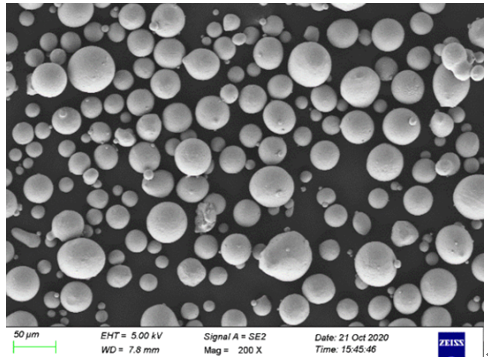
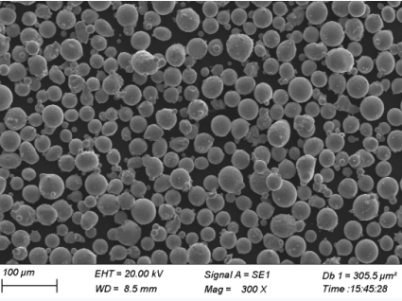
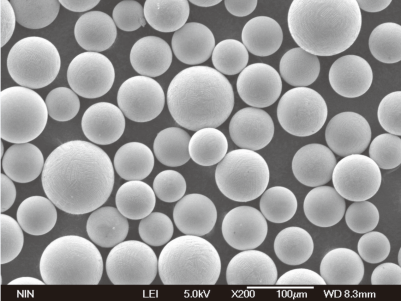
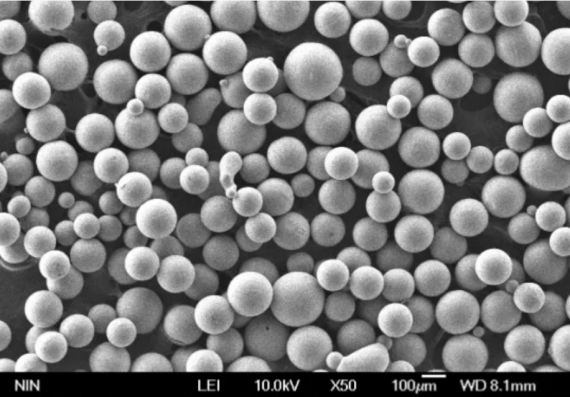
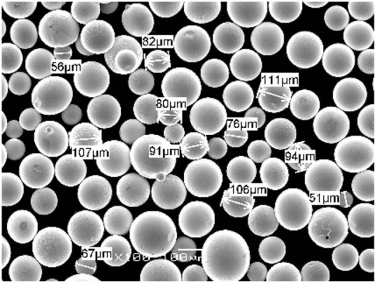
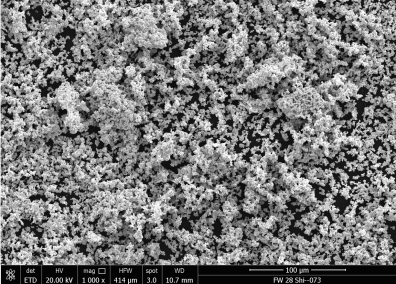
Aplicaciones de los polvos de cromo-cobalto
Los polvos de cromo-cobalto son materiales versátiles que se utilizan en diversos sectores. He aquí algunas de sus aplicaciones más comunes:
| Solicitud | Industria | Detalles |
|---|---|---|
| Implantes dentales | Médico | Las aleaciones de CoCr se utilizan en coronas, puentes y estructuras dentales. |
| Implantes de cadera y rodilla | Médico | Debido a su biocompatibilidad y resistencia al desgaste, las aleaciones de CoCr se utilizan en prótesis articulares. |
| Álabes de turbina | Aeroespacial | Los polvos de CoCr se utilizan en motores a reacción por su resistencia a altas temperaturas. |
| Asientos de válvulas y cojinetes | Automotor | Su alta resistencia al desgaste las hace ideales para estos componentes. |
| Herramientas de corte | Industrial | Las aleaciones de CoCr se utilizan en herramientas por su dureza y durabilidad. |
| Componentes aeroespaciales | Aeroespacial | Se utiliza en componentes críticos sometidos a grandes esfuerzos debido a su resistencia a la fatiga. |
| Prótesis | Médico | Las aleaciones de CoCr se utilizan en la fabricación de prótesis duraderas y biocompatibles. |
| Revestimientos resistentes al desgaste | Industrial | Se utiliza en revestimientos para prolongar la vida útil de los equipos expuestos a condiciones duras. |
Especificaciones, tamaños, calidades y normas
Los polvos de cromo-cobalto se presentan en diversas especificaciones, tamaños y grados, cada uno de ellos adaptado a aplicaciones específicas. En la tabla siguiente se resumen las principales especificaciones:
| Especificación | Grado | Tamaño de las partículas (µm) | Estándar |
|---|---|---|---|
| ASTM F75 | Médico | 15-45 | ASTM F75 |
| AMS 5894 | Aeroespacial | 10-53 | AMS 5894 |
| ASTM F90 | Médico | 20-50 | ASTM F90 |
| Stellite 21 | Industrial | 15-63 | ASME BPVC |
| ASTM F562 | Médico | 25-45 | ASTM F562 |
| CoCrAlY | Aeroespacial | 10-50 | AMS 5894 |
| CoCrFeMnNi | Investigación | 10-45 | A medida |
| CoCrMoTi | Médico | 20-45 | ISO 5832-4 |
| CoCrSiW | Industrial | 15-63 | ASME BPVC |
| CoCrMoNb | Aeroespacial | 10-50 | AMS 5894 |
Proveedores y precios
El coste de los polvos de cromo-cobalto varía en función del grado, el tamaño de las partículas y el proveedor. Aquí tienes un desglose de algunos proveedores y sus precios:
| Proveedor | Grado | Precio (USD/kg) | País |
|---|---|---|---|
| Tecnología Carpenter | ASTM F75 | $250 – $300 | EE.UU. |
| Sandvik | Stellite 21 | $200 – $250 | Suecia |
| Arcam AB (GE Additive) | CoCrMoTi | $300 – $350 | Suecia |
| HC Starck | CoCrAlY | $400 – $450 | Alemania |
| ATI Metales | ASTM F90 | $280 – $320 | EE.UU. |
| Tecnología LPW | CoCrFeMnNi | $350 – $400 | REINO UNIDO |
| EOS GmbH | ASTM F562 | $270 – $320 | Alemania |
| Tecnologías de superficie Praxair | CoCrSiW | $200 – $260 | EE.UU. |
| Hoganas | CoCrMoNb | $320 – $380 | Suecia |
| Kennametal | CoCrZr | $250 – $310 | EE.UU. |
Ventajas y limitaciones de Polvos de cromo-cobalto
Como cualquier material, los polvos de cromo-cobalto tienen sus puntos fuertes y débiles. Explorémoslos:
| Ventajas | Limitaciones |
|---|---|
| Alta resistencia a la corrosión | Coste: El cobalto y el cromo son materiales caros. |
| Excelente resistencia al desgaste | Densidad: Más pesado que algunas alternativas como las aleaciones de titanio. |
| Resistencia a altas temperaturas | Maquinabilidad: Las aleaciones de CoCr pueden ser difíciles de mecanizar. |
| Biocompatibilidad | Disponibilidad: Oferta limitada en comparación con aleaciones más comunes. |
| Resistencia a la fatiga | Complejidad de procesamiento: Requiere un control preciso durante la fabricación. |
| Versatilidad en todos los sectores | Impacto medioambiental: La extracción y el refinado del cobalto pueden tener importantes consecuencias para el medio ambiente. |
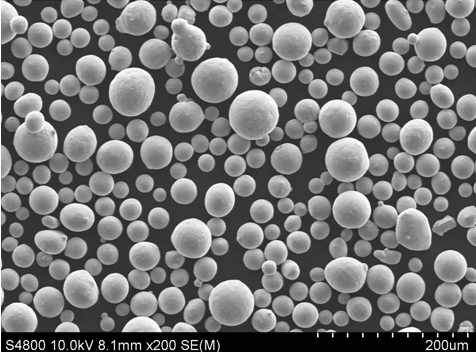
preguntas frecuentes
P1: ¿Para qué se utilizan principalmente los polvos de cromo-cobalto?
A1: Los polvos de cromo-cobalto se utilizan principalmente en aplicaciones de alto rendimiento que requieren materiales de gran resistencia, resistencia al desgaste y resistencia a la corrosión. Se utilizan mucho en los sectores médico, aeroespacial e industrial.
P2: ¿Son seguras las aleaciones de cromo-cobalto para los implantes médicos?
A2: Sí, las aleaciones de cobalto-cromo son biocompatibles, lo que las hace seguras para su uso en implantes médicos como coronas dentales y prótesis de cadera y rodilla.
P3: ¿En qué se diferencian los polvos de cromo-cobalto de las aleaciones de titanio?
A3: Los polvos de cobalto-cromo ofrecen una mejor resistencia al desgaste y una mayor solidez a temperaturas elevadas en comparación con las aleaciones de titanio. Sin embargo, el titanio es más ligero y, a menudo, más fácil de mecanizar.
P4: ¿Cuál es el coste típico de los polvos de cromo-cobalto?
A4: El coste varía según la calidad y el proveedor, pero suele oscilar entre 200 y 450 dólares el kilogramo.
P5: ¿Cuáles son los retos de la transformación de polvos de cromo-cobalto?
A5: Entre los retos de la transformación figuran el elevado coste de las materias primas, la complejidad del mecanizado y la necesidad de un control preciso durante la fabricación para evitar defectos.
P6: ¿Qué industrias se benefician más de los polvos de cromo-cobalto?
A6: Las industrias médica y aeroespacial se benefician considerablemente del uso de polvos de cromo-cobalto debido a sus exigentes requisitos de rendimiento de los materiales.
P7: ¿Existen problemas medioambientales asociados a los polvos de cromo-cobalto?
A7: Sí, la extracción y el tratamiento del cobalto y el cromo pueden tener repercusiones medioambientales, sobre todo en las regiones mineras de donde proceden estos metales.
P8: ¿Pueden utilizarse polvos de cromo-cobalto en la impresión 3D?
A8: Por supuesto Los polvos de CoCr se utilizan habitualmente en la fabricación aditiva para producir componentes complejos de alto rendimiento.
P9: ¿Cómo mejoran los polvos de cobalto-cromo el rendimiento de las herramientas de corte?
A9: La alta resistencia al desgaste y la dureza de las aleaciones de CoCr las hacen ideales para herramientas de corte, lo que permite una mayor vida útil de las herramientas y cortes más precisos.
Q10: ¿Cuál es el futuro de los polvos de cromo-cobalto en la fabricación?
A10: Con los continuos avances en la ciencia de los materiales, se espera que los polvos de cromo-cobalto sigan siendo cruciales en aplicaciones de vanguardia, sobre todo en la fabricación aditiva y la ingeniería biomédica.
Conclusión
Los polvos de cobalto-cromo son algo más que una mezcla de metales: son la piedra angular de la ingeniería moderna y los avances médicos. Ya sea en el motor de un avión a reacción o en el interior del cuerpo de un paciente, las propiedades únicas de estos polvos garantizan que cumplan las estrictas exigencias de las aplicaciones de alto rendimiento.

